Bearded iris care and growing guide: how to grow these vibrant flowers
We've got everything you need to know about bearded iris care for growing them successfully in your garden
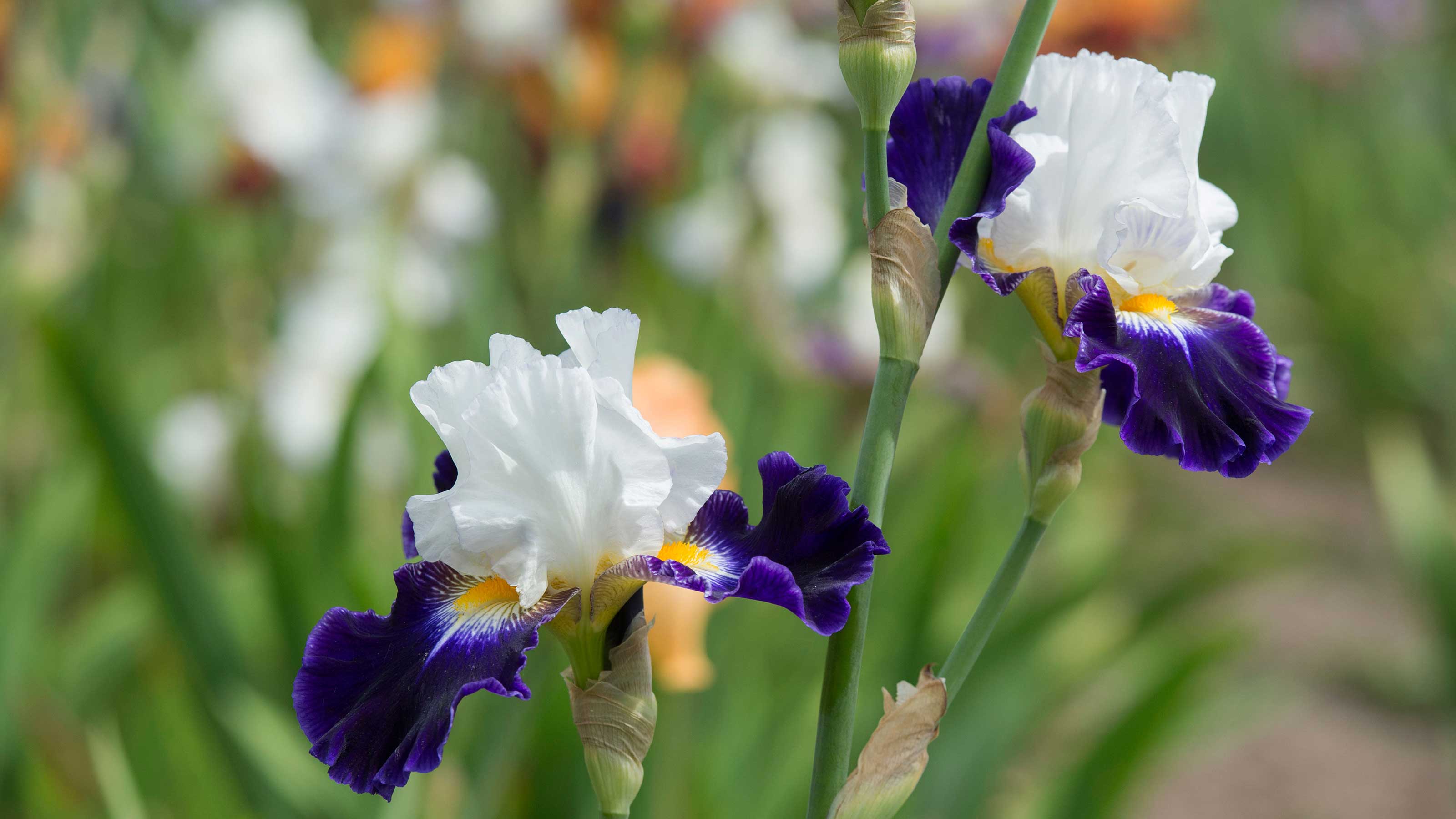

Upright and beautiful, bearded irises are the most colorful of the irises – available in a literal rainbow of colors and color combinations. They are the varieties that we know and love in our spring and early summer gardens. The leaves and flower stems grow up separately from the fat rhizomes (swollen roots) that grow horizontally at the soil surface.
Sometimes known as flag irises, there is a cluster of fine furry hairs at the base of each of the three outer petals: this is the 'beard'. These are often brightly colored and thought to function as guides for pollinating insects.
These hardy perennials differ in height, flower size, and flowering season but all appreciate the same growing conditions. We've rounded up everything you need to know to add them to your flower bed ideas successfully.
What are the main types of bearded iris?
Bearded irises are conveniently divided into six groups by plant size and flower size, each with a more or less self-explanatory name. They run from the shortest, earliest flowering and relatively small-flowered to the tallest, largest flowered, and latest flowering.
- Miniature Dwarf Bearded (MDB): Very short stems up to about 8in (20cm) tall carry flowers up to 23/4in (7cm) across. The very first to flower.
- Standard Dwarf Bearded (SDB): Stems 8–16in (20–40cm) tall carry flowers up to 3in (7.5cm) across.
- Intermediate Bearded (IB): 16–28in (40–70cm) stems have flowers up to 43/4in (12cm) across.
- Table or Miniature Tall Bearded (MTB): Stems 16–26in (40–65cm) tall with flowers up to 3in (7.5cm) across.
- Border Bearded (BB): Stems 16–26in (40–65cm) carry flowers up to 5in (13cm) across.
- Tall Bearded (TB): The tallest bearded irises at 28–34in (70–85cm) and with flowers up to 6in (15cm) across, although occasionally they're even taller and larger flowered. The last to bloom.
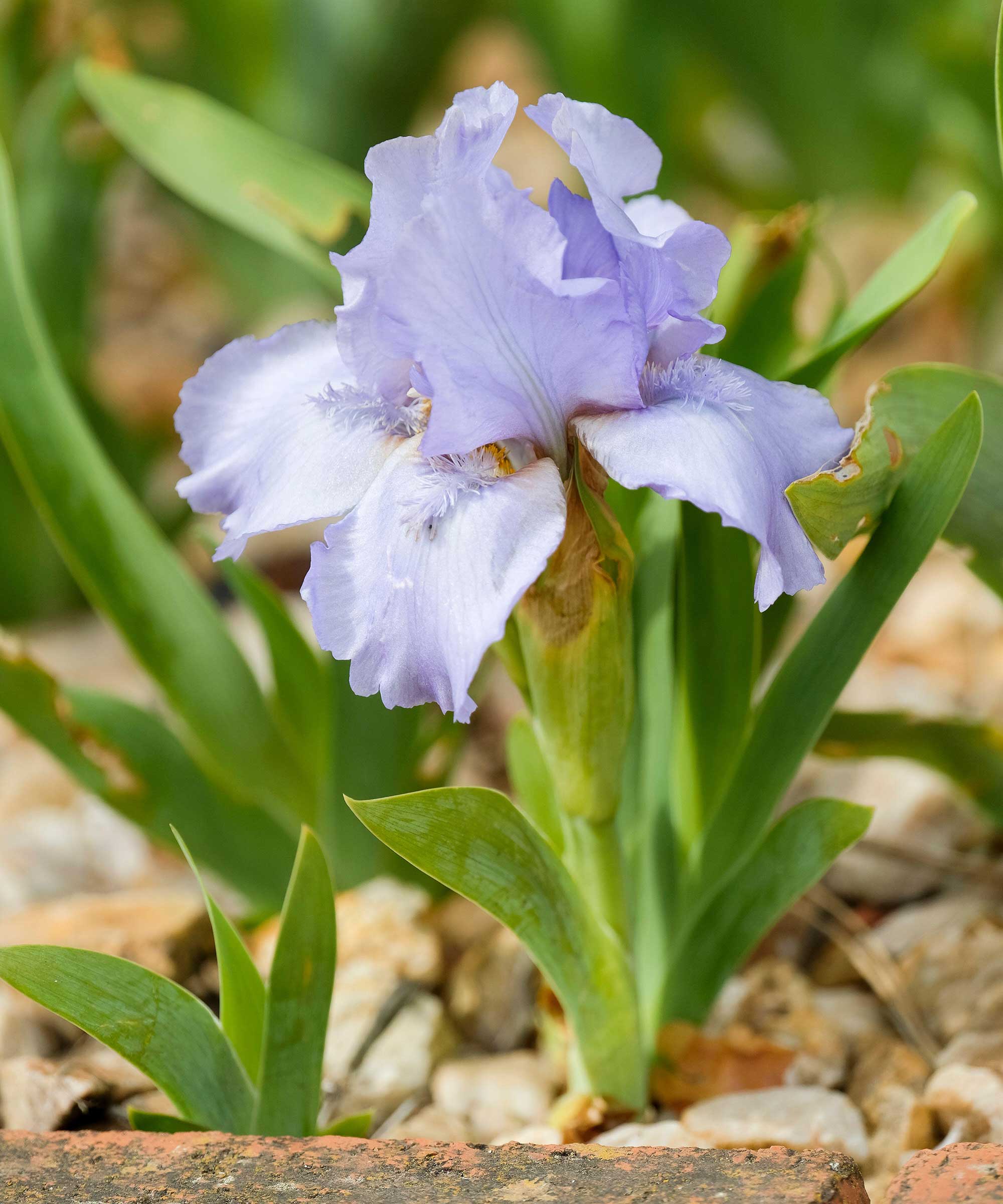
'Jeremy Brian' is a standard dwarf bearded iris
Where to plant bearded iris
When it comes to how to grow bearded iris, choosing the right location is key. A sunny site in rich but well-drained soil is best. They prefer soil types that are not acidic and hate wet or shady conditions.
In hotter regions, some midday shade is fine, but bearded irises need six hours of sun at the very least otherwise they will not bloom.
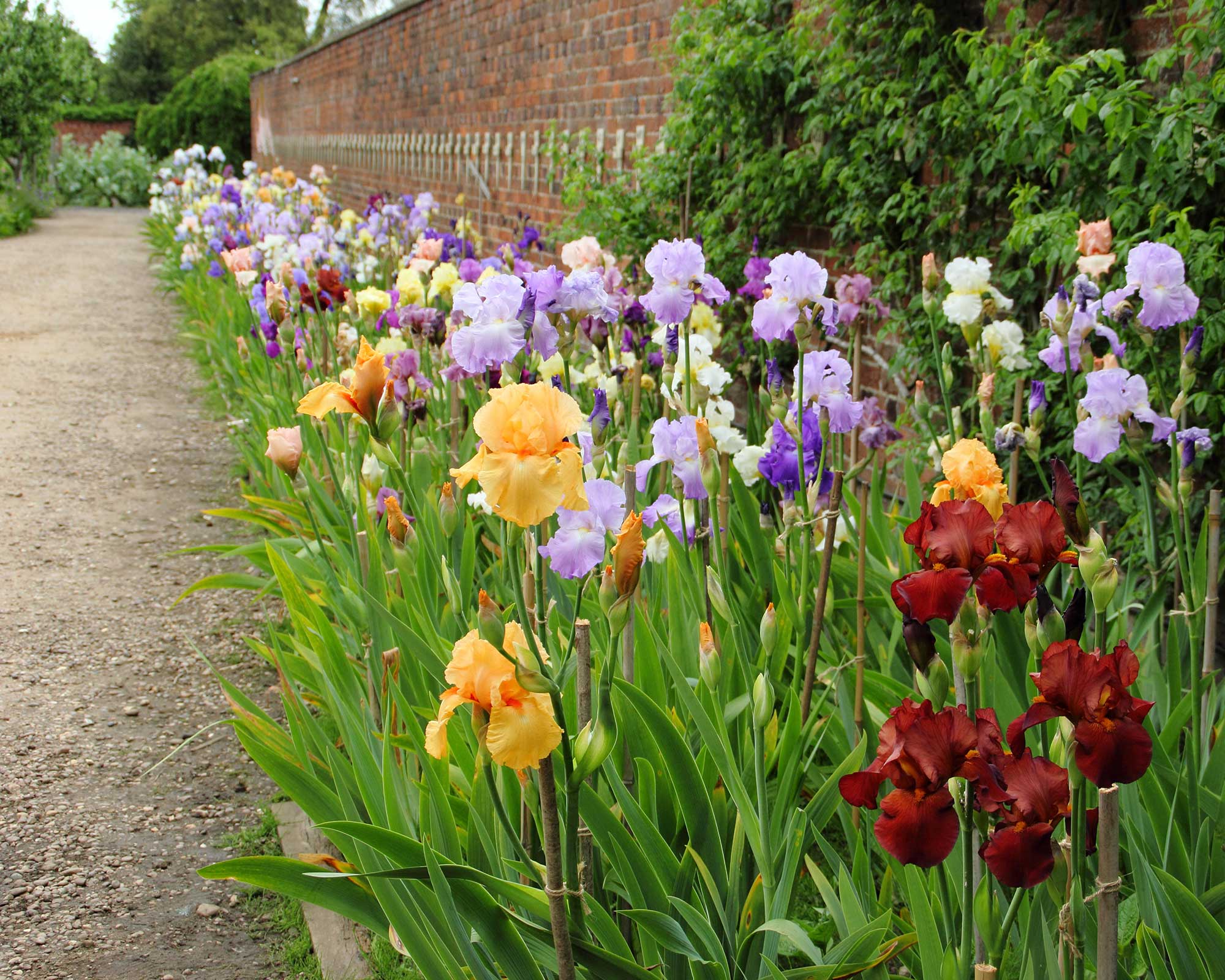
Plant your bearded iris somewhere sunny
When to plant bearded iris
Bearded irises bought in flower should be planted as soon as you get home. Likewise, rhizomes received by mail order should be planted as soon as you receive them.
Rhizomes will arrive in summer, but although this may not seem a good time for planting, as long as they are kept moist for the first few weeks they should establish well. It is essential that they have six weeks in which to settle in before the first frosts in your area.
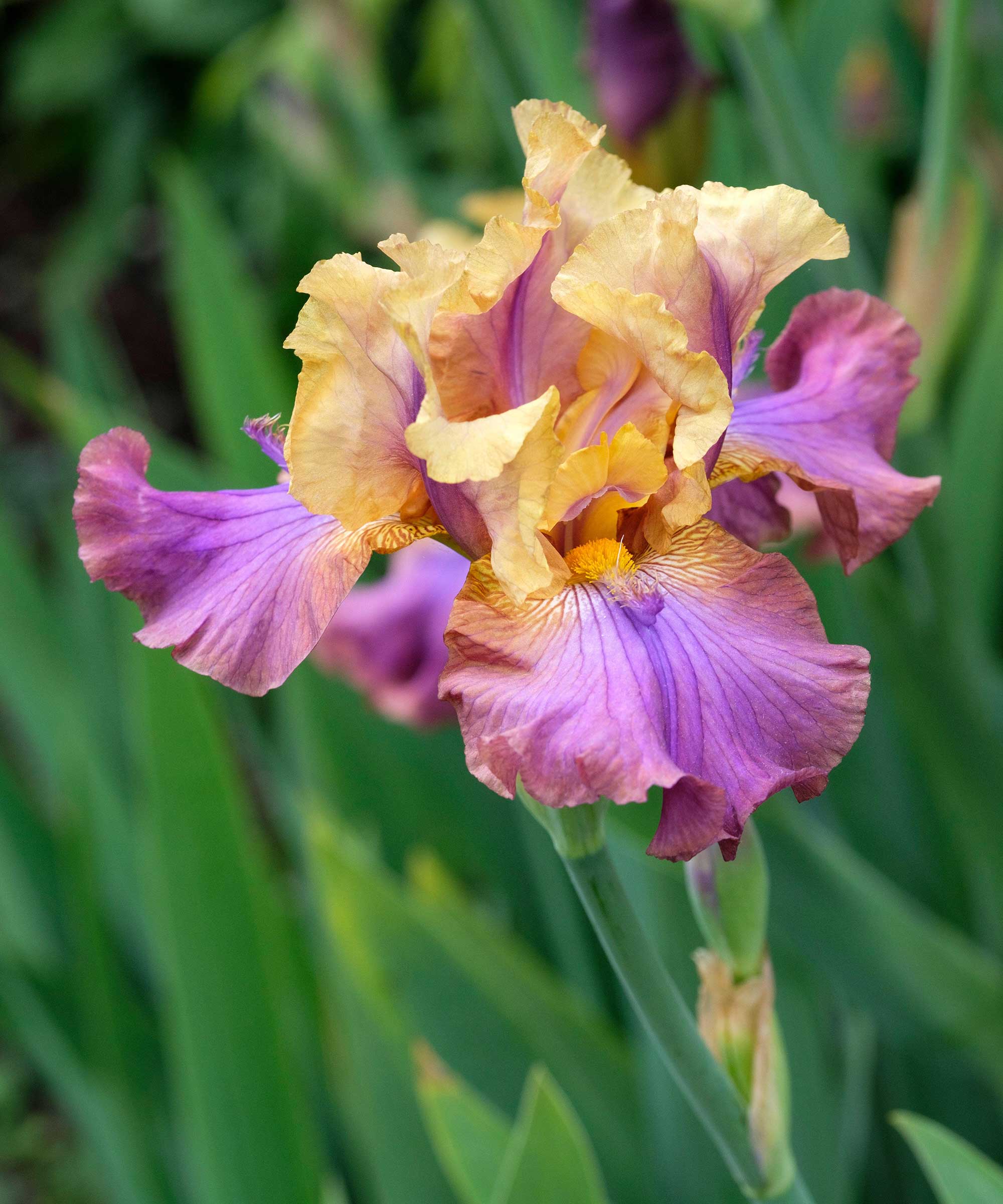
'Carnaby', a tall variety of bearded iris, is a real stunner
How to plant bearded iris
Prepare the general area with extra humus in poor or clay or sandy soils: if you're composting at home, this is a great opportunity to use it.
Then, plant your irises 12–18in (30–45cm) apart so that the tops of the rhizomes are not covered by soil. Work some crumbly soil in amongst the roots before watering in.
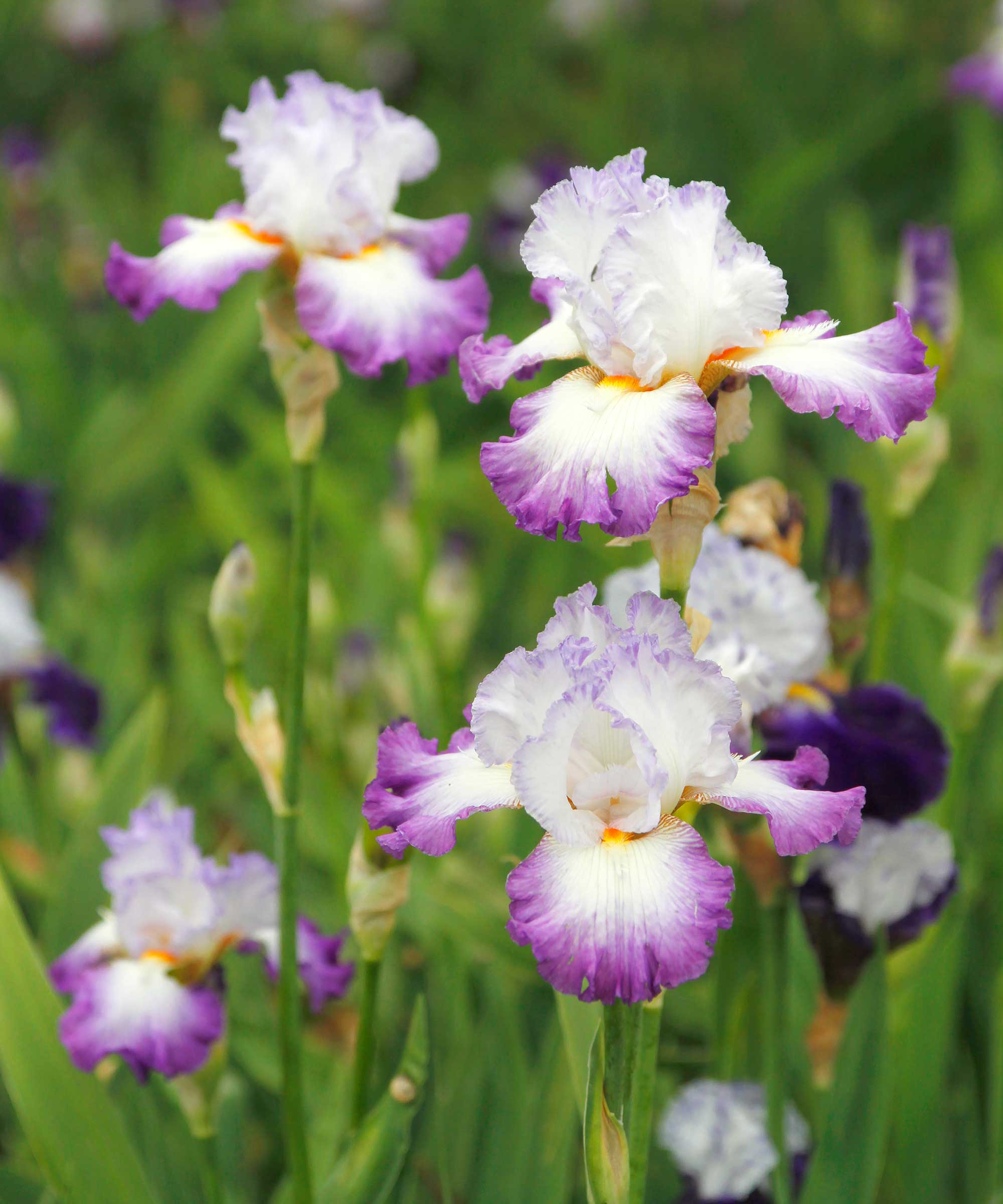
Don't cover the tops of rhizomes with compost when planting your bearded irises
How to care for bearded iris
Bearded iris care is really straightforward. The legendary perennials expert Graham Stuart Thomas says in his classic work, Perennial Garden Plants, (available on Amazon): 'They usually require no staking; only a few need division to keep them in good health, and their flowers are of exquisite beauty, mostly fragrant, and many are followed by good seed pods.'
You should cut out the flowering stems when the last flowers collapse, otherwise little maintenance is needed. Eventually, clumps may become overcrowded resulting in fewer flowers, but this can be remedied by dividing them up – as instructed below.
Slugs and snails can be a problem, especially early in the year, but our guide on how to get rid of slugs has plenty of advice for tackling them. Insects sometimes bore into the rhizomes which start to rot – but you can simply cut out the affected parts.
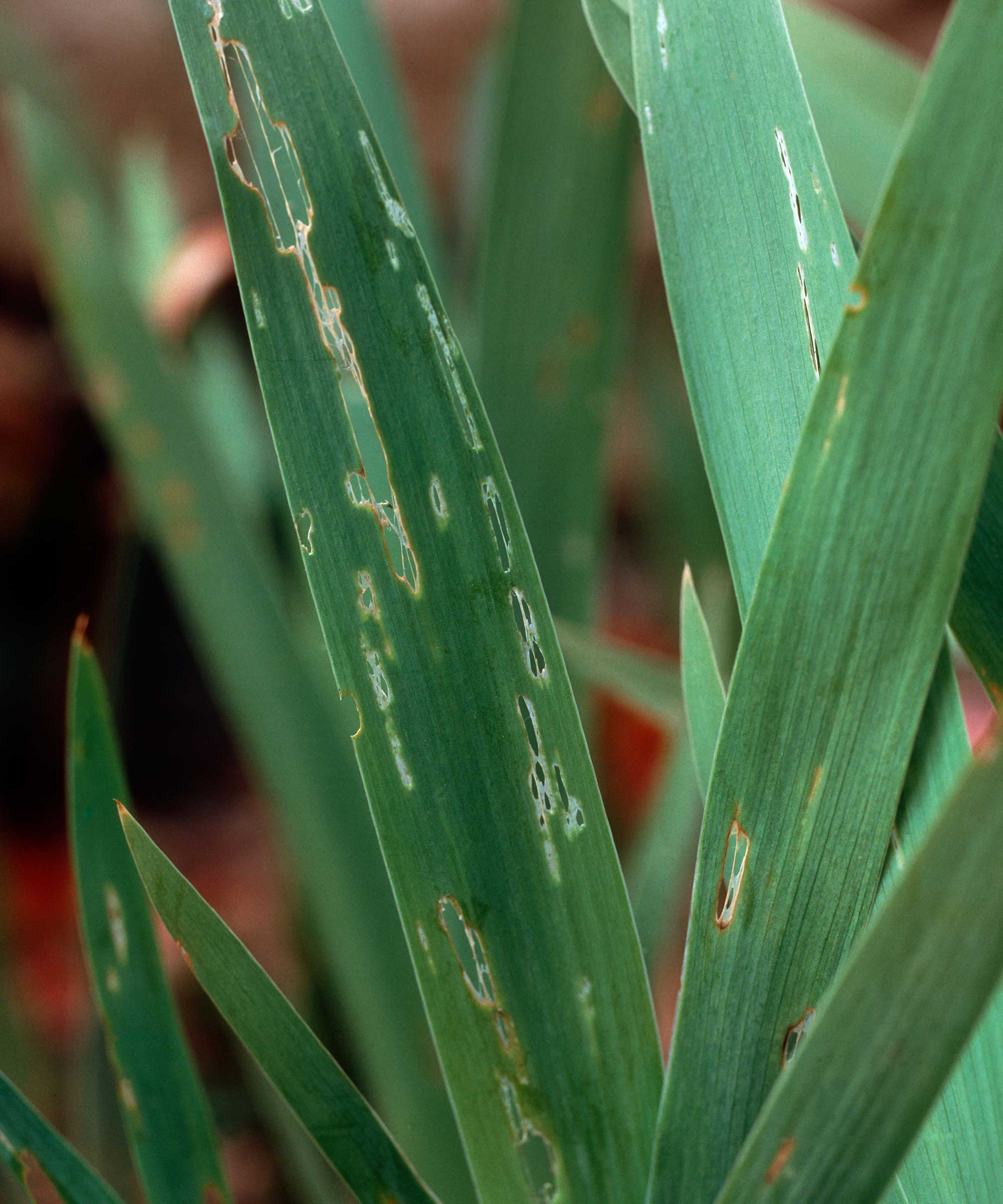
Slugs can damage the leaves of bearded irises
How to divide bearded iris plants
Dividing up irises will prevent them from becoming congested and keep them flowering well, plus it's a great way to get free plants.
About a month after flowering, dig up the plant. Shake the dirt off the roots and use secateurs to cut the rhizomes into lengths of about 4in (10cm) – less for dwarf varieties. Ensure that there is a fan of foliage at one end, and roots growing from the rhizome. Cut the foliage back by half to prevent gales from loosening the roots.
Amend the planting site with soil improver or well-rotted garden compost and plant the rhizomes so that the tops are exposed and soil is worked in around the roots.
Some plants will grow well for six or seven years or more before needing division, while some may need dividing after three or four years.
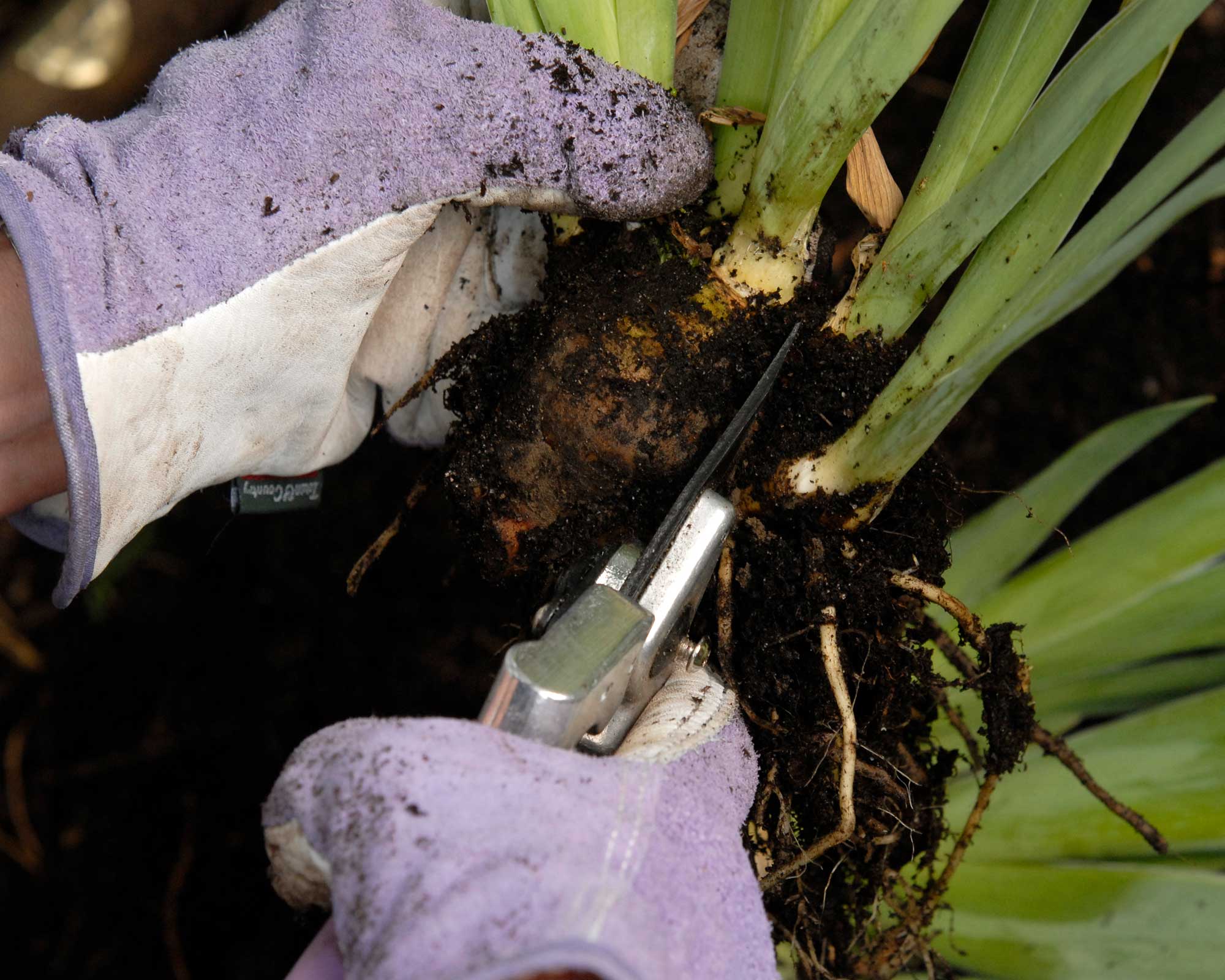
Divide up irises when they become congested
Are irises deer resistant?
Most gardeners find that irises are a deer-resistant plant. It is assumed that they do not like the taste.
If, for some reason, other food is limited, they may sample irises. But usually, they will be safe.
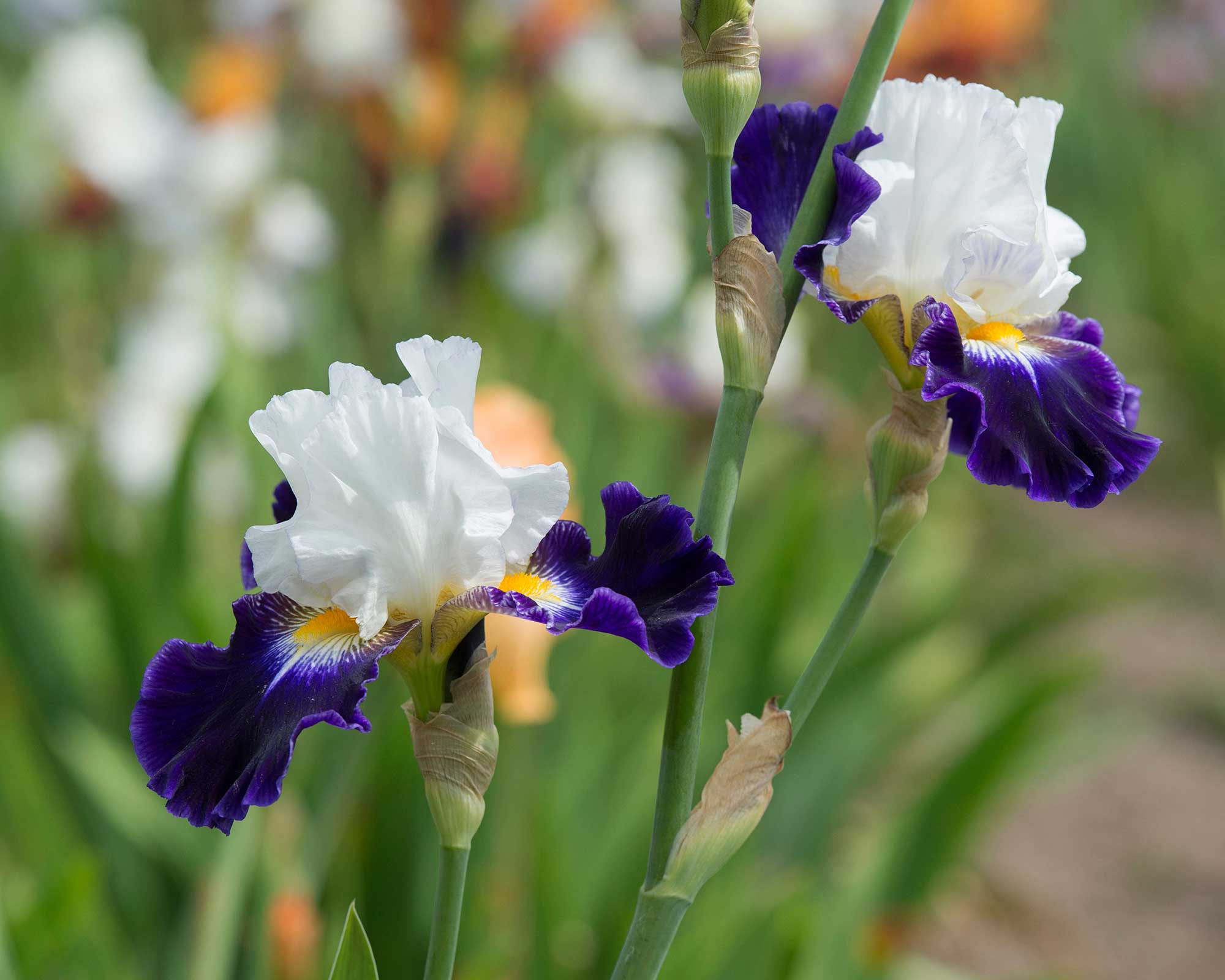
Bearded iris 'Noctambule' has an elegant aesthetic
The roots of my bearded irises are now exposed to the sun, should I replant them?
Bearded irises develop fat rhizomes that spread steadily at the soil surface. Roots grow down into the soil from underneath the rhizomes and the tops are exposed.
Bearded irises will rot away and die if they're planted so that the rhizomes are covered in dirt. So no, do not replant if yours are exposed to the sun, and be sure to clear away any debris such as fallen leaves that covers the rhizomes – you can always use them to make leaf mold.
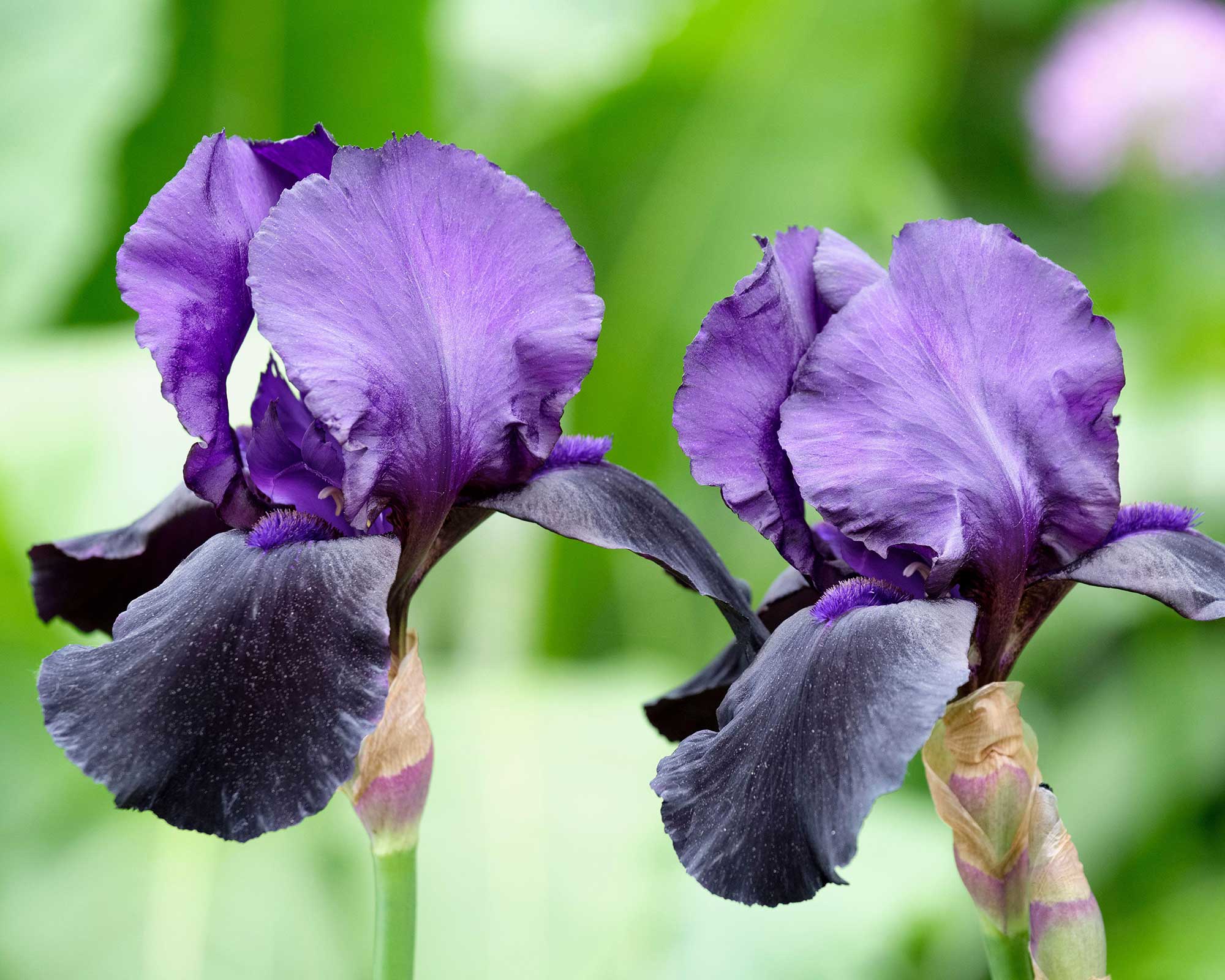
'Black Dragon' bearded irises offer a moody shot of purple to the border
My irises have plenty of leaves but no flowers. What is wrong?
If you have this problem, your irises have probably been growing in the same place for too long. They have become overcrowded, the roots have taken up all the nutrients from the soil, and the result is no flowers. Divide them up following the instructions above.
The other possibility is that, although you may have originally planted your irises in full sun, trees or tall shrubs have now spread overhead and your irises are in the shade. In this case, you'll need to dig them up and replant healthy young pieces in a new, sunnier site. After all, although there are plenty of beautiful shade-loving plants, irises are not one of them.
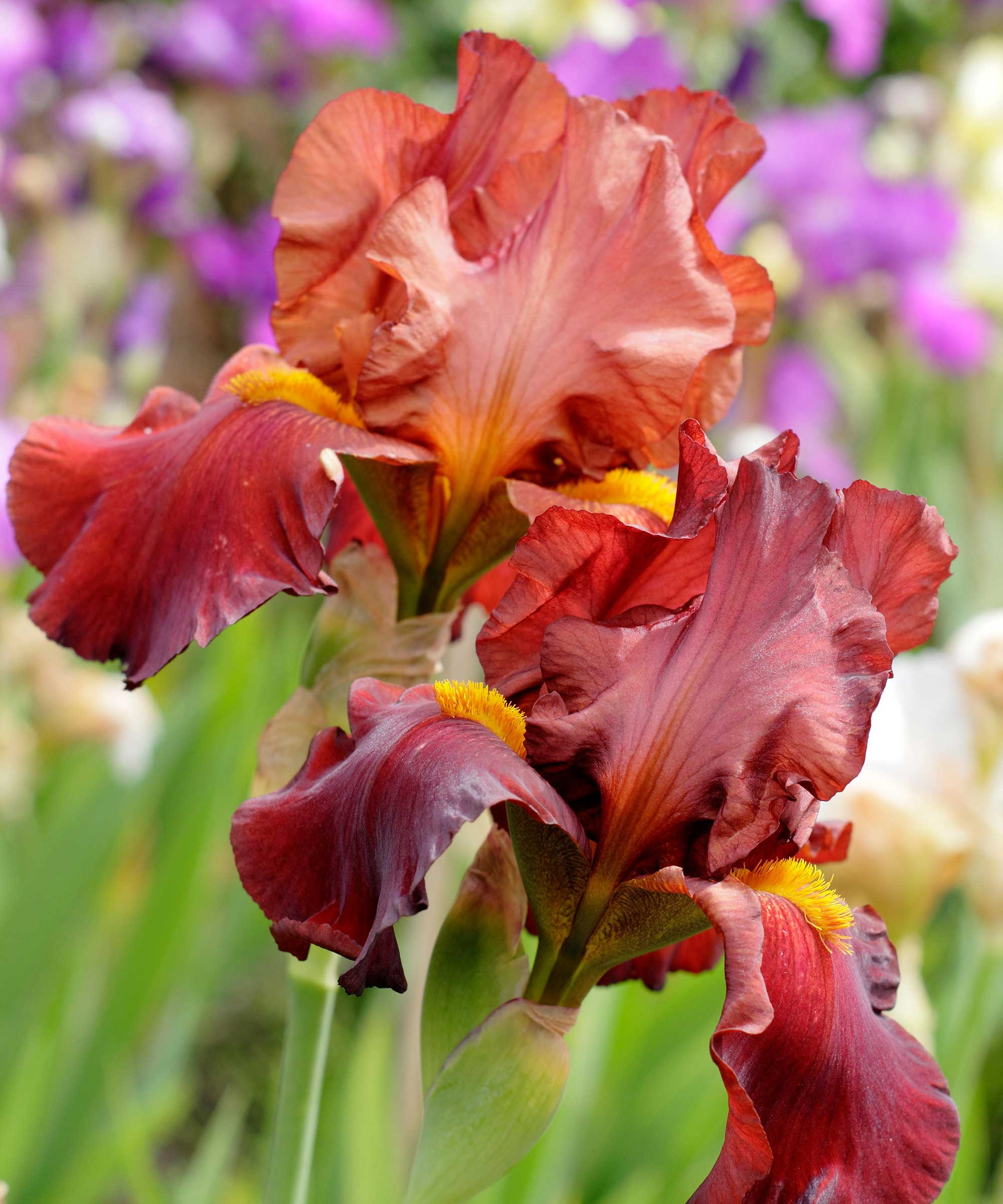
‘Red Kite’ is perfect for hot-hued planting schemes
How and where to buy bearded iris
Bearded irises are sold in pots in flower in spring and early summer at retail nurseries, garden centers, and the garden departments of DIY and big box stores. Planted straight away, these irises give you instant color and will soon settle in and establish themselves before winter.
They are also sold in a very different way. North America has some of the finest mail-order iris specialists in the world with a huge range of varieties available. Mail-order suppliers dig up the iris rhizomes from the nursery after flowering, trim them, clean them, tag each one, and then pack them for home delivery almost anywhere in the country.
They may look a little discouraging when they arrive: a fan of green leaves that has usually been cut back is attached to a short, fat piece of rhizome. They will soon revive after planting and are very resilient.
To help you start your search, we've listed some quicklinks to top suppliers.
Where to buy bearded iris in the US:
- Shop bearded iris plants at Amazon
- Shop bearded iris plants at Brent & Becky's
- Shop bearded iris plants at Iris Warehouse
- Shop bearded iris plants at Lowe's
- Shop bearded iris plants at Schreiner’s Gardens
- Shop bearded iris plants at Sutton's Iris
Where to buy bearded iris in the UK:
- Shop bearded iris plants at Amazon
- Shop bearded iris plants at Chailey Iris Garden
- Shop bearded iris plants at Claire Austin Hardy Plants
- Shop bearded iris plants at Crocus
- Shop bearded iris plants at Iris of Sissinghurst
- Shop bearded iris plants at Seagate Nurseries
- Shop bearded iris plants at Thompson & Morgan

Graham Rice is a garden writer who has won awards for his work online, and in books and magazines, on both sides of the Atlantic. He is a member of a number of Royal Horticultural Society committees and the recipient of the 2021 Garden Media Guild Lifetime Achievement Award.
